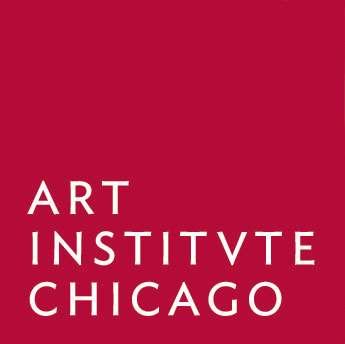John D. Randall (1919-1999) Papers, 1884-1993
- IdentificationPUBLIC "-//The Art Institute of Chicago::Ryerson and Burnham Art and Architecture Archives//TEXT(US::ICA::1994.4::JOHN D. RANDALL (1919-1999) PAPERS, 1884-1993)//EN" "ica199404.xml"
- TitleRandall, John D. (1919-1999), Papers, 1884-1993
- PublisherArt Institute of Chicago Archives, Research Center, The Art Institute of Chicago,
-
Language
- English.
- English
- Date1884-1993
-
Physical Description
- 3.25 linear feet (2 boxes) and 1 portfolio
- Manuscripts, books, printed papers, posters, black and white photographic prints, and postcards.
- RepositoryRyerson and Burnham Art and Architecture Archives, The Art Institute of Chicago 111 S. Michigan Ave. Chicago, IL 60603-6110 archives@artic.edu https://www.artic.edu/archival-collections
- AbstractDocuments compiled by architectural historian John D. Randall in the course of research for the revised edition of book, History of the Development of Building Construction in Chicago (1999), and subsequent publications.
- OriginationRandall, John D. (1919-1999)
- LocationThe collection is housed in the Art Institute of Chicago Archives’ on-site stacks.
John D. Randall (1919-1999) was a Chicago architect, author, and preservationist. Son of structural engineer and author Frank Alfred Randall (1883-1950), he graduated from Illinois Institute of Technology in 1943 where he studied under the influential German architect Ludwig Mies van der Rohe. John Randall became the champion of Adler and Sullivan's Guaranty Building in Buffalo, New York, and Wainwright Building in St. Louis, Missouri; both were ultimately saved from destruction. During his long campaign to preserve the Guaranty, he opened and operated the Louis Sullivan Architecture Museum within it. Randall also joined the fight to save Adler and Sullivan's now demolished Garrick Theater in Chicago. In addition to his own writings on architecture, in 1999 Randall revised and expanded his father's comprehensive reference book, History of the Development of Building Construction in Chicago (Urbana: University of Illinois Press, 1949).
This collection is comprised of John D. Randall's many publications, correspondence, photography by Richard Nickel, and other miscellaneous articles and images. Entries are listed alphabetically by building name or general subject. Several of the books included in the donation were transferred to the Ryerson and Burnham Libraries in 1999.
Items are arranged in alphabetical order by subject
-
Names
- Randall, John D. (1919-1999)
- Randall, John D.--Archives.
-
Subject
- Architecture--Illinois--Chicago--20th century--Sources.
- Architecture--New York (State)--Buffalo--Sources.
- Architectural drawing--Exhibitions.
- Architects--Illinois--Chicago--Archives.
Architecture and Design: Henry Ericsson Co. VII, no. 2, March 1943.
Centennial History of the City of Chicago: its Men and Institutions. Chicago: Inter Ocean, 1905.
Chicago and its Resources Twenty Years After 1871-1891. Chicago: Chicago Times Co., 1892.
Holcombe, Paul E. Depreciation and Obsolescence in the Tacoma Building. Chicago: National Association of Building Owners and Managers, 1929.
Moderne Architektur. Vienna: Verlag von Anton Schroll, 1902.
Prudential Building Buffalo. Buffalo: Louis Sullivan Architecture Museum and Resource Center, 1980.
Randall, John D. Frank Lloyd Wright: Six Buffalo Houses. Buffalo, 1983.
John D. Randall papers (Chicago History Museum).
This collection may be used by qualified readers in the Reading Room of the Ryerson and Burnham Libraries at The Art Institute of Chicago. Collections maintained on-site are available for patron use without prior arrangement or appointment. Collections maintained in off-site storage will be retrieved with advance notification; please consult the Archivist for the current retrieval schedule. For further information, consult http://www.artic.edu/aic/libraries/rbarchives/rbarchaccess.html
The Art Institute of Chicago is providing access to the materials in the Libraries' collections solely for noncommercial educational and research purposes. The unauthorized use, including, but not limited to, publication of the materials without the prior written permission of the Art Institute is strictly prohibited. All inquiries regarding permission to publish should be submitted in writing to the Archivist, Ryerson and Burnham Archives, The Art Institute of Chicago. In addition to permission from the Art Institute, permission of the copyright owner (if not the Art Institute) and/or any holder of other rights (such as publicity and/or privacy rights) may also be required for reproduction, publication, distribution, and other uses. Responsibility for making an independent legal assessment of any item and securing any necessary permissions rests with the persons desiring to publish the item. The Art Institute makes no warranties as to the accuracy of the materials or their fitness for a particular purpose.
John D. Randall Papers, Ryerson and Burnham Art and Architecture Archives, The Art Institute of Chicago.
This majority of this collection was a gift of John D. Randall to the Ryerson and Burnham Archives in 1994. Additional materials from the Richard Nickel Archive and an unknown source were added in 2014.
The collection was processed by Natasha Derrickson of the Ryerson and Burnham Archives in 2001. This finding aid was revised and expanded by Annemarie van Roessel in 2002 and Anna Feuer in 2014.
Architecture and Design: Henry Ericsson Co. VII, no. 2, March 1943.
Centennial History of the City of Chicago: its Men and Institutions. Chicago: Inter Ocean, 1905.
Chicago and its Resources Twenty Years After 1871-1891. Chicago: Chicago Times Co., 1892.
Holcombe, Paul E. Depreciation and Obsolescence in the Tacoma Building. Chicago: National Association of Building Owners and Managers, 1929.
Moderne Architektur. Vienna: Verlag von Anton Schroll, 1902.
Prudential Building Buffalo. Buffalo: Louis Sullivan Architecture Museum and Resource Center, 1980.
Randall, John D. Frank Lloyd Wright: Six Buffalo Houses. Buffalo, 1983.
